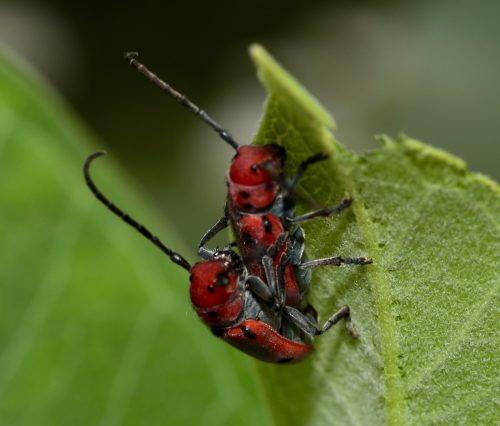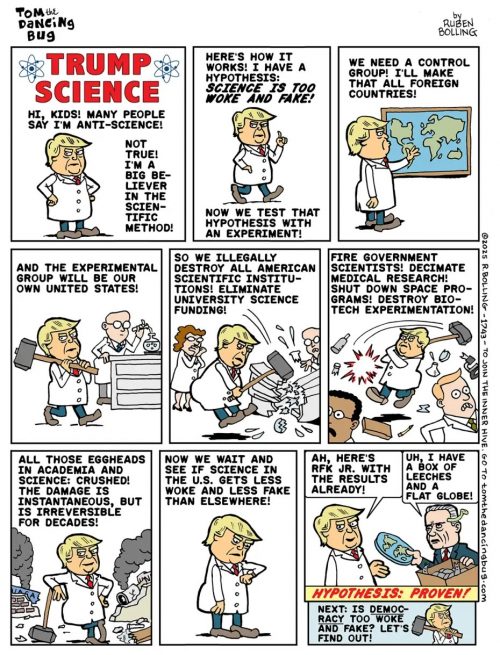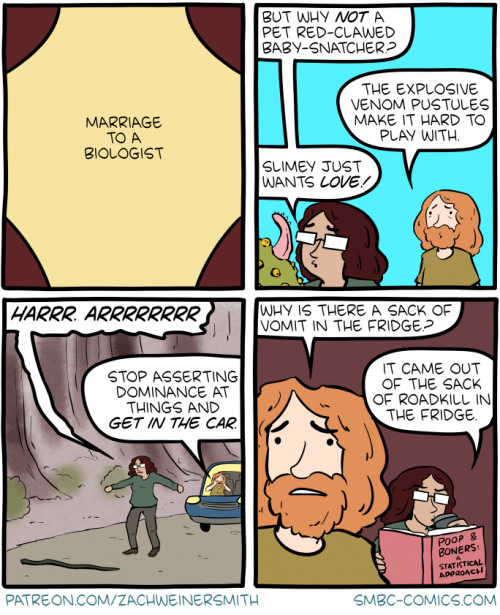Agustín Fuentes has published a new book, Sex is a Spectrum: The Biological Limits of the Binary. I just started reading it last night — and it’s very good so far — so don’t expect a full review just yet, but El Pais has published an interview with Fuentes in which he discusses the main themes. As you might guess from the title, he’s rejecting the idea that sex is a binary, and further, that the general implications of sex are not reducible. He’s an anti-Coyne. He’s also strongly advocating for a view of organisms that incorporates environmental factors beyond naked genetics.
Q. You assert that sex is a biocultural issue… but many of the people reading this interview will think that sex is about biology, not culture.
A. That depends on how you define “sex.” If you’re speaking only about gametes, everyone understands that [an] egg isn’t a woman and [a] sperm isn’t a man. We have to rethink a little about what we’re talking about. Just think about our feet, which are biological traits. But at the same time, look at your foot and look at the foot of a person who has never worn shoes. The two are almost distinct: the structure of the bones, the muscles and the skin changes. When I discuss sociocultural contexts, we’re talking not only about the embodiment of culture, but the mutual exchanges between experience, perception, bones, muscles, digestive systems, vascular systems… there’s a lot of interconnection between our physical body and the world and the experiences we have. There’s always more intermingling and a bit more complexity.
One of the unfortunate consequences of the Mendelian revelation is that we’ve swung way too far the other way, treating the individual as nothing more than the combinatorial action of a set of genes. Development is a critical and complicated input in generating the information that makes up the individual!
Then he gets into a point I’ve made multiple times before: there are so many distinct criteria that are used to identify a human’s sex, so just the fact that there are multiple independent measures refutes the claim that there is one pure definitive definition.
Q. You write about how the concept of “sex at birth” isn’t very rigorous, because it can mean many different things. You talk about the “three Gs.”
A. In the biological context, we’re talking about typical categorizations based on three factors: genes, gonads and genitals: the three Gs. A 3G woman would be one who has ovaries, clitoris/vagina/labia, and XX chromosomes. And a 3G man would be one who has testicles, penis/scrotum and XY chromosomes.
The importance of using 3G is the range of variation: it’s a spectrum that has standard groupings. We assume that, by looking at the genitals, you’re sure to have the other two Gs. And it’s true that they’re highly correlated, but not absolutely correlated, not 100%. We must understand, biologically, that these categories don’t contain all the variation in human beings; there’s variation beyond that. And, among the 3Gs, there are people – more than we think – in whom one of those Gs is a little different. If we use only the genitals at birth, or the chromosomes or the genes, we’re leaving out a lot of extremely relevant information.
I agree, except I’d suggest that there are more than three factors used. Some people claim that behavior is a factor in defining sex — true women, as we all know, are submissive, while men are dominant and aggressive. We can pile up all sorts of stereotypes and associations and none of them are going to be universal.
Q. This 3G explanation doesn’t reflect the biological reality of 1% of humanity, as you state in the book, which is at least 80 million people. But if it reflects that of the 99%, so isn’t it natural for many people to say, “Well, 99% is almost binary, isn’t it?”
A. But what is binary? I’m not saying there aren’t things that are binary in human beings. Gametes are binary: sperm and eggs. But saying that human beings are binary is a failure. It limits us too much when we’re thinking about the full range of variation between human beings. A binary relationship is that of one and zero. They’re completely distinct. This concept is used in computer science, because there’s no overlap in any element: either you have a one, or you have a zero. But human beings – our bodies, our ways of being – aren’t like that. There’s nothing between men and women that makes them totally different, like one and zero, because they come from biological materials that overlap on that spectrum of variation in our bodies.
To say that we’re binary is philosophy. It’s not biology. It’s declaring oneself essentialist: there are [men and women], two types of humans. But our biology doesn’t validate that position. Yes, there are binary things in our biology, but to say that human beings come in two different types is false. And we can prove it. Genitals, hormones, brains, organs… when you understand the range of variation between our bodies, it becomes very clear that human beings don’t come in binary, but in typical sets.
“Almost binary” — how can anyone say that with a straight face? The word “almost” refutes the claim.
Q. Is this an attempt to invoke science to justify a model for people? A model for society and a model for women?
A. Trump isn’t using science; all of his executive orders are a total scientific failure. Science – by pointing out the range of biological variation in human beings – shows us that there are indeed several ways to be human. And that’s the important thing. In any country, in any culture, there’s a range in bodies and sexualities, but our cultures, our governments, diminish the possibilities of expressing [ourselves] and living within that range. We’re always on an average; we’re bits and pieces of the full range of human beings. And the main thing is to at least know what the possibilities of that range are… to understand that this is what being human is all about: variation, not a standard.
Our culture is always controlling where we can express ourselves. We’re biocultural organisms: there’s always a greater range of variation than what’s culturally accepted. And that’s the difficult part. Because many people are certain that “this is a woman and this is a man.” But if they start thinking, “My cousin has a slightly different body,” they then realize that there’s greater variation. We all know people who are outside the typical categorization, be it behaviorally or biologically, of what we think women and men are.
Wait — he didn’t answer the question! Should we have a different model for society, men, and women? I’d say yes, and I can see how Fuentes is addressing an implied point, by bringing up Trump’s anti-scientific attempts to impose a rigid binary structure on America. It is the scientist’s role to explain how our preconceptions about the universe are contradicted by nature, and the narrow perspective of conservatives is flatly wrong, and therefore is a bad foundation for building social policy.
Fuentes for president! He’s American-born, so he qualifies, but he “wants to regain Spanish citizenship for fear of the political degradation in the United States,” so I’d worry that he’s going to be part of the flight of intellectuals from the US.









